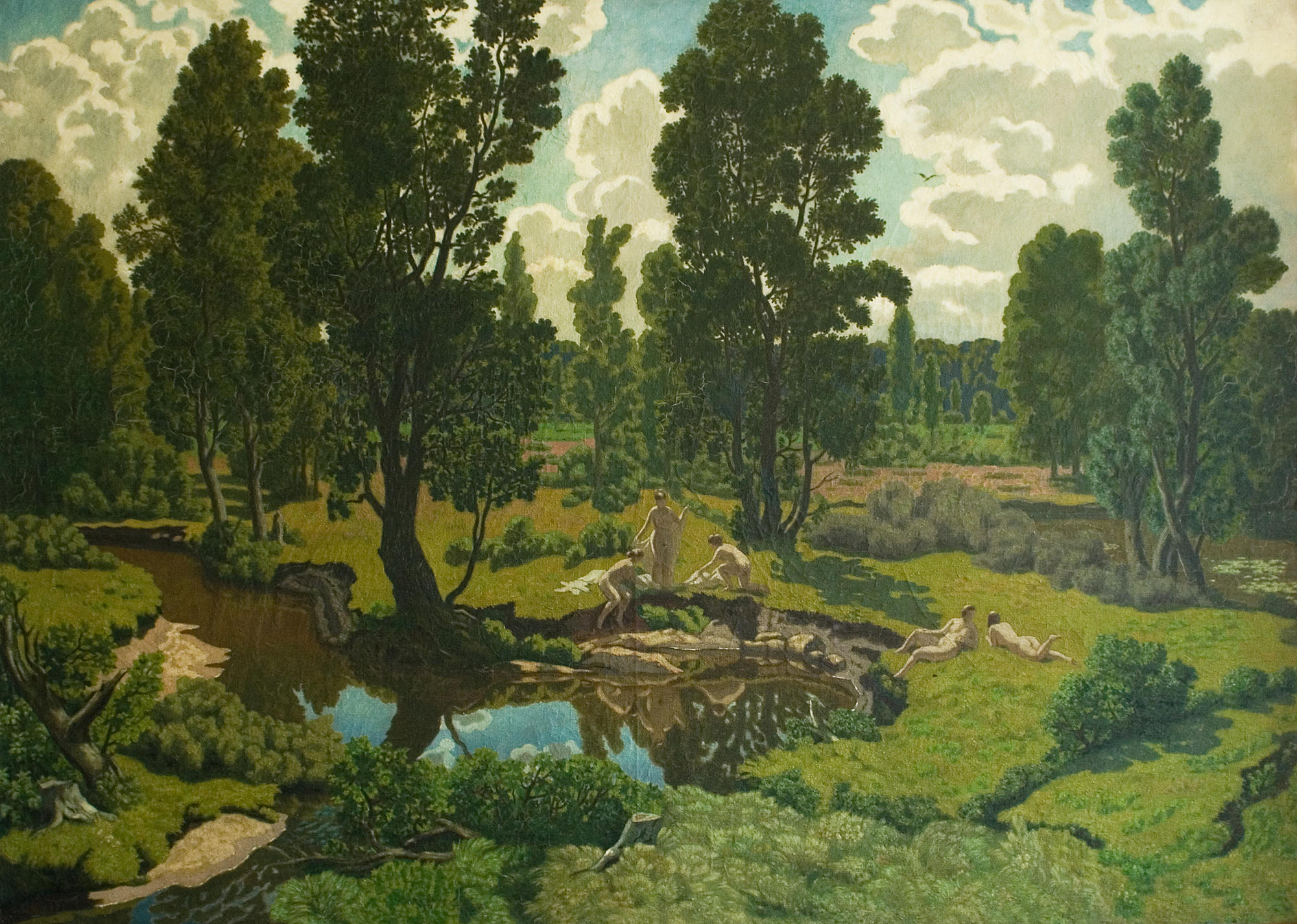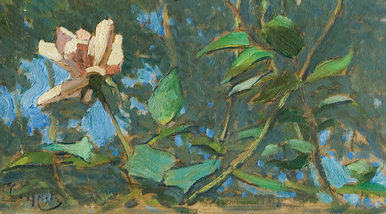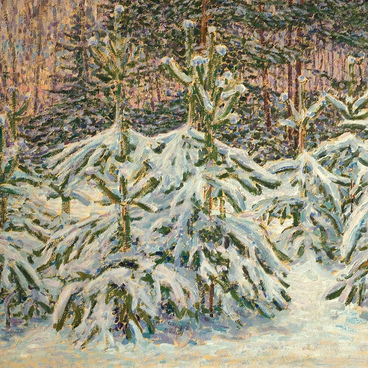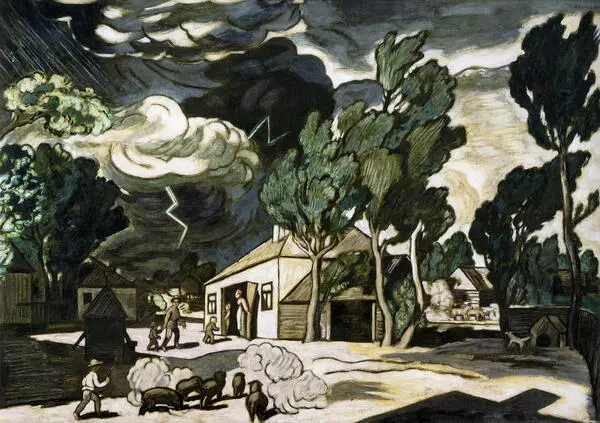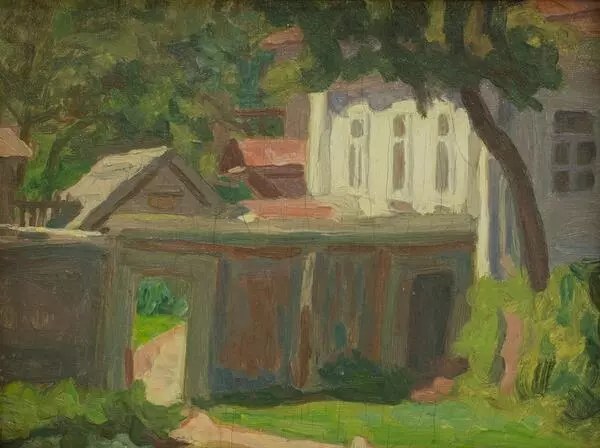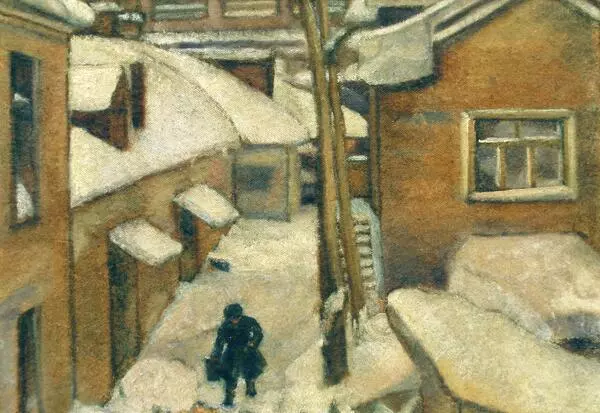The collection of the Astrakhan Art Gallery features several paintings of the Russian and Soviet artist Nikolai Krymov. He was born in 1884 in Moscow in the family of Itinerant artist Peter Krymov. The father became the first teacher for his talented son. In 1904, Nikolai entered Moscow School of Art, Sculpture and Architecture where he studied with famous masters Konstantin Korovin and Valentin Serov. Soon Krymov became a participant of the Blue Rose exhibition and exhibitions of the Union of Russian Artists.
Krymov’s landscapes exhibited in the Astrakhan Art Gallery are painted in the traditions of romantic decorative landscape characteristic of his creative work of the 1910–1920s. A Summer Day. Landscape created in 1914 is the most expressive work of that period.
Krymov painted this landscape “from imagination”, having “cleared” the landscape from all details, so it resembles more a tapestry than a painting. The tonal painting used by the artist adds to this impression. In this system, the main color (tone) is formed by the system of additional ones.
The depiction of objects: clouds in counter light, lush crowns of trees and shrubs, reflections in the forest pool – immovable and static, motionless shadows and generalized background resembling a stage flat render a timeless spirit to the painting.
Krymov’s favorite artists who largely determined his artistic vision were Ilya Repin and Isaac Levitan. Hence vivid and emotional perception of nature was most important for Krymov. The artist denied the then fashionable exaggerated compositions and wild experimenting in painting, and working from nature required exact rendition of visual images.
Nikolai Krymov also wrote art research papers. He tried to theoretically summarize the classical understanding of painting that was finalized in the XIX century and formulated the well-known theory of ‘overall tone’. He believed that the important thing in painting was not color but tone, i.e. the strength of light in color. Krymov asserted that only the color taken in the right tone becomes real color rather than just paint, and ‘spiritualizes’.
Krymov’s landscapes exhibited in the Astrakhan Art Gallery are painted in the traditions of romantic decorative landscape characteristic of his creative work of the 1910–1920s. A Summer Day. Landscape created in 1914 is the most expressive work of that period.
Krymov painted this landscape “from imagination”, having “cleared” the landscape from all details, so it resembles more a tapestry than a painting. The tonal painting used by the artist adds to this impression. In this system, the main color (tone) is formed by the system of additional ones.
The depiction of objects: clouds in counter light, lush crowns of trees and shrubs, reflections in the forest pool – immovable and static, motionless shadows and generalized background resembling a stage flat render a timeless spirit to the painting.
Krymov’s favorite artists who largely determined his artistic vision were Ilya Repin and Isaac Levitan. Hence vivid and emotional perception of nature was most important for Krymov. The artist denied the then fashionable exaggerated compositions and wild experimenting in painting, and working from nature required exact rendition of visual images.
Nikolai Krymov also wrote art research papers. He tried to theoretically summarize the classical understanding of painting that was finalized in the XIX century and formulated the well-known theory of ‘overall tone’. He believed that the important thing in painting was not color but tone, i.e. the strength of light in color. Krymov asserted that only the color taken in the right tone becomes real color rather than just paint, and ‘spiritualizes’.
